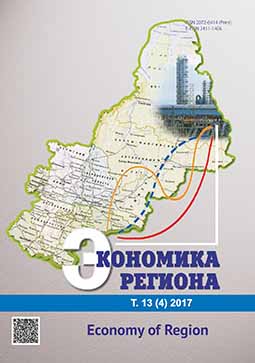Методика комплексной оценки микрорайонов мегаполиса на основе мнений горожан
Methods of Integrated Assessment of Megalopolis’s Micro-Districts on the Basis of Residents’ Opinions
Author(s): Anna Petrovna Bagirova, Olga Veleryevna Notman, József VeressSubject(s): Economy
Published by: Институт экономики Уральского отделения Российской академии наук
Keywords: ratings; micro-districts; megalopolis; city administration; city infrastructure; territorial development; sociological survey; satisfaction level among city residents; emotional perceptions of areas;
Summary/Abstract: The paper presents a methodology for assessing city areas on the basis of residents’ opinions. In contrast to preceding approaches, this methodology combines the opinions on the various features of living in certain micro-districts as well as the way these districts are perceived. Therefore, this technique includes the rational and emotional assessments. Moreover, we assess both the district residents and the inhabitants living outside the area. Thus, the research combines the assessments from inside and outside. The evaluation is based on the representative survey of the residents of Ekaterinburg. The research hypothesis is that city districts will differ significantly in the attractiveness as well as in a set of determinants for the assessments given by residents. The authors’ methodology for rating micro-districts includes three groups of indicators. First, there is the assessment of the residents’ satisfaction level in various aspects of their lives. Second, we assess the residents’ emotional appraisal of the areas, in which they live. Last, there is a choice of the city’s best micro-district to live in. The empirical research found a high degree of differentiation in the obtained ratings and highlighted their socio-economic determinants such as the assessment of personal financial position, housing type, assessment of personal living conditions. The findings of this research provide insights for managerial decisionmaking in strategic regional planning. In particular, these results can be used to address the polarization of the development of urban areas revealed in this research. Further research can be conducted in three directions. Firstly, a deeper analysis of the availability and attractiveness of different types of infrastructure for residents (medical, educational, relaxation infrastructures, etc.) would be of interest. Secondly, micro-district could be ranked by different groups of population (retirees, persons with disabilities, etc.). Last, further research needs an assessment of the different micro-districts attractiveness for work and leisure activities.
Journal: Экономика региона
- Issue Year: 13/2017
- Issue No: 4
- Page Range: 1138-1150
- Page Count: 12
- Language: Russian

